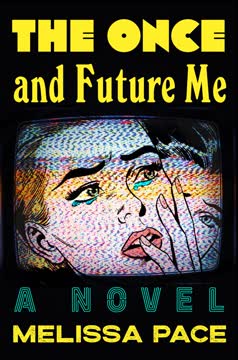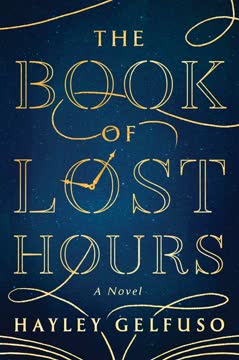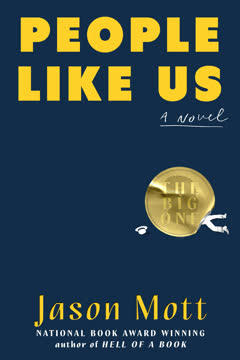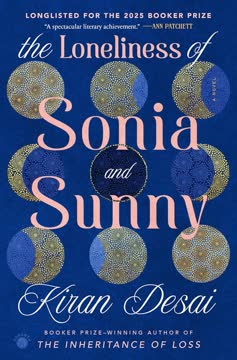Plot Summary
Flight From Darkness
In the dead of night, Steph's mother flees an abusive husband, driving her two daughters, Steph and Kayla, from Texas to Oklahoma. The journey is marked by fear, blood, and silence, but also by the hope of safety in a land tied to their Cherokee heritage. As they cross state lines, the girls sense the magnitude of their mother's decision, the trauma left behind, and the uncertainty ahead. The moon follows them, a silent witness to their flight, as Steph begins to understand that survival sometimes means running toward the unknown, carrying both wounds and the stories that will shape her.
New Worlds, Old Wounds
Eight years later, Steph is a driven, science-obsessed teen in Tahlequah, Oklahoma, longing for escape—ideally to outer space. Her mother, struggling to provide, creates a makeshift "Space-Culture Camp" to substitute for the real Space Camp Steph can't afford. The camp, blending Cherokee culture and astronomy, is both a gift and a disappointment. Steph's relationship with her mother and sister is fraught with unspoken pain and longing. The past lingers, shaping Steph's ambitions and her sense of alienation, as she dreams of a future far from the limitations of her small town and complicated family.
Space-Culture Camp
At the camp, Steph's yearning for the stars clashes with the realities of her family's circumstances. Her mother's efforts to blend tradition and science are well-intentioned but fall short of Steph's expectations. The camp's activities—rolling down hills in makeshift "space capsules," creek snorkeling, and language lessons—highlight the gap between Steph's aspirations and her environment. Tensions with her sister Kayla and the other campers reveal Steph's social struggles and her deep need to be seen. The camp becomes a microcosm of her life: improvisation, disappointment, and the persistent hope that something greater awaits.
Sisters in Orbit
Steph and Kayla's relationship is a complex dance of love, jealousy, and misunderstanding. Kayla, more at ease in their new world, thrives socially and culturally, while Steph feels like an outsider, haunted by memories Kayla doesn't share. Their differences come to a head during camp, as Steph's protectiveness and envy surface. The sisters' paths begin to diverge—Kayla embracing her Cherokee identity and community, Steph clinging to her scientific ambitions. Yet, beneath the friction, their bond endures, shaped by shared trauma and the unspoken promise to look out for each other, even as they drift apart.
The Weight of Belonging
Steph grapples with questions of identity—what it means to be Cherokee, to be "enough," to belong. The camp's rituals and the community's expectations force her to confront her mixed heritage and the legacy of assimilation, blood quantum, and exclusion. Stories of ancestors, both proud and painful, are passed down, but always with gaps and silences. Steph's longing for acceptance is complicated by her mother's insistence on tradition and her own skepticism. The struggle to reconcile personal ambition with communal belonging becomes a central tension, as Steph wonders if she must choose between her dreams and her roots.
Family Stories, Family Secrets
The Harper family's past is a tapestry of resilience, betrayal, and survival. Steph's mother shares stories of ancestors who endured the Trail of Tears, built schools, and fought for their people—but also of those who made compromises, signed treaties, or owned slaves. These stories are both a source of pride and a burden, shaping the family's sense of self and their place in the world. Secrets—about Steph's father, about violence, about abandonment—linger in the background, threatening to unravel the fragile sense of safety the family has built. The past is never truly past; it shapes every choice.
Becoming Ahnawake
As Steph grows, she is given the Cherokee name Ahnawake, a gesture of belonging from her stepfather Brett. Yet, her journey is marked by constant negotiation—between science and tradition, ambition and loyalty, self and community. She excels academically, dreams of Exeter and NASA, and falls in love with the stars. But her mother's choices, Kayla's different path, and the realities of being a Cherokee girl in Oklahoma complicate her trajectory. Steph's identity is forged in the tension between what she inherits and what she chooses, between the names given to her and the one she claims for herself.
Love and Other Orbits
At college, Steph's world expands. She falls for Della, a fellow Native student with her own complicated history of adoption and belonging. Their relationship is passionate but fraught—marked by cultural differences, family expectations, and the scars of the past. Steph's ambition and emotional guardedness clash with Della's need for connection and understanding. As they orbit each other, sometimes drawing close, sometimes pushing away, both are forced to confront what they want from love, from family, and from themselves. The pain of heartbreak becomes a catalyst for growth, as Steph learns the cost of vulnerability.
Protest and Purpose
As Steph pursues her dream of becoming an astronaut, her path intersects with Indigenous protest movements—first through her sister Kayla's activism, then directly during a Mars simulation mission in Hawai'i. The fight to protect sacred land from scientific encroachment forces Steph to confront the ethical dilemmas at the heart of her work. Torn between loyalty to her family and her career, she makes choices that have lasting consequences. The tension between progress and preservation, between individual achievement and collective responsibility, becomes a crucible in which Steph's values are tested and transformed.
The Cost of Survival
Steph's ambition leads her to betray the protest movement—and, by extension, her sister—in order to protect her place in the astronaut program. The fallout is immediate and painful: family rifts, guilt, and the realization that no one is immune from the compromises survival demands. Meanwhile, Kayla's own life unravels—her marriage falters, her activism is questioned, and she is forced to confront the limits of her own idealism. Both sisters must reckon with the cost of their choices, the weight of their ancestors' struggles, and the possibility of forgiveness.
Breaking the Circle
The death of Steph and Kayla's mother brings the sisters back together, forcing them to confront the full legacy of their family's history—its traumas, silences, and acts of love. In the aftermath, they must decide what to carry forward and what to let go. The process of mourning becomes an opportunity for honesty, reconciliation, and the reimagining of what family can be. As they sift through memories and belongings, Steph and Kayla begin to understand that healing is not about erasing the past, but about finding a way to live with it.
The Edge of Space
Steph's journey to space is nearly derailed by a life-threatening accident during an underwater training mission. The experience—marked by pain, fear, and the desperate will to survive—forces her to confront her own mortality and the fragility of her dreams. In the aftermath, she reconnects with Nadia, a fellow astronaut candidate, and begins to see the value of relationships, community, and kindness. The edge of space becomes not just a physical boundary, but a metaphor for the limits of ambition, the necessity of interdependence, and the possibility of starting over.
The Gravity of Home
Steph returns home to Oklahoma, physically and emotionally scarred but determined to make amends. She and Kayla navigate the aftermath of their mother's death, the realities of divorce and single parenthood, and the challenge of building a life rooted in both tradition and change. Through shared stories, art, and the slow work of forgiveness, the sisters find a new equilibrium. The gravity of home—its pull, its pain, its promise—grounds them, even as they continue to look to the stars.
The Past That Haunts
As the sisters sort through family archives and oral histories, they confront uncomfortable truths about their ancestors—treaty signers, slave owners, survivors, and resisters. The process is both humbling and liberating, forcing them to acknowledge the complexity of their heritage and the impossibility of purity. The past is revealed as a living force, shaping not only their identities but their responsibilities to the future. In facing what haunts them, Steph and Kayla begin to imagine new ways of being Cherokee, new ways of being family.
Forgiveness and Return
Through honest conversation, shared grief, and acts of care, Steph and Kayla move toward forgiveness—of each other, of their parents, and of themselves. The process is messy and incomplete, but it opens the door to new possibilities. Steph learns to let go of the need for perfection, to accept the limits of her power, and to find meaning in connection rather than achievement. Kayla, too, finds strength in vulnerability, in asking for help, and in embracing the full, complicated truth of her life. Together, they begin to write a new story.
The Light Left On
As Steph prepares for her mission to space, she and Kayla honor their mother's memory by returning to the places that shaped them—Kituwah, Tahlequah, the family home. They share stories with the next generation, pass on traditions, and leave the light on for those who come after. The act of remembering becomes an act of hope, a way of keeping the past alive while making room for the future. The sisters' journey is not one of escape, but of return—of finding home in each other, in the community, and in the stories they choose to tell.
Ancestors and Aftermath
The legacy of the Harper family—its triumphs, failures, and acts of survival—lives on in Steph, Kayla, and Felicia. Through art, science, activism, and love, they honor their ancestors while forging new paths. The aftermath of loss is not emptiness, but possibility: the chance to build something better, to be better, to leave the world changed. The past is not a chain, but a thread, connecting them to those who came before and those who will follow. In the end, it is not the moon or Mars that matters most, but the light left on at home.
To the Moon and Back
Steph finally achieves her dream of spaceflight, circling the Earth and looking down on the home that shaped her. The view is both humbling and awe-inspiring—a reminder of the fragility and beauty of life, of the interconnectedness of all people, of the stories that bind us. As she orbits above, she thinks of her mother, her sister, her ancestors, and the generations yet to come. The journey to the moon and back is not just a personal triumph, but a testament to the power of survival, forgiveness, and the enduring pull of home.
Characters
Steph Harper
Steph is the novel's central figure—a Cherokee girl whose childhood trauma and outsider status fuel her relentless drive to become an astronaut. Her relationship with her mother is fraught with both love and resentment, shaped by secrets and survival. Steph's bond with her sister Kayla is complex: protective, jealous, and ultimately redemptive. Throughout her journey, Steph struggles to reconcile her scientific ambitions with her cultural heritage, her need for independence with her longing for connection. Her psychological arc is one of moving from isolation and self-centeredness toward empathy, vulnerability, and a deeper understanding of her place in the world and her family.
Kayla Harper
Kayla, Steph's younger sister, is everything Steph is not: socially adept, culturally fluent, and seemingly at ease in her own skin. She embraces her Cherokee identity, becomes a community leader and activist, and builds a public persona as a mommy blogger and artist. Yet, beneath her confidence lies her own wounds—abandonment, the pressure to perform, and the pain of betrayal. Kayla's journey is one of learning to balance idealism with reality, to forgive both herself and her family, and to find strength in vulnerability. Her relationship with Steph is both a source of pain and a path to healing.
Hannah Harper (Mom)
Hannah is the mother who risks everything to save her daughters, yet is unable to fully escape her own trauma. Her life is marked by poverty, violence, and the weight of family history. She clings to stories of Cherokee ancestors as both shield and guide, sometimes at the expense of honesty. Her relationship with her daughters is defined by sacrifice, silence, and the hope that they will have better lives. Hannah's arc is one of gradual self-acceptance, the courage to confront her own mistakes, and the quiet, enduring love that holds her family together.
Della Ericson
Della is a fellow Native student and Steph's first great love. Adopted out of her Cherokee family as a child, Della's life is shaped by questions of identity, belonging, and loss. Her relationship with Steph is passionate but fraught, as both struggle with the scars of their pasts and the demands of their families. Della's journey is one of reclaiming her story, building a chosen family, and learning to love herself as she is. She embodies the complexities of adoption, the pain of cultural erasure, and the possibility of healing through connection.
Brett
Brett is Steph and Kayla's stepfather, a teacher who becomes a stabilizing force in their lives after their escape from Texas. He offers language, tradition, and a sense of belonging, but is also marked by his own limitations and eventual betrayal. Brett's relationship with the girls is paternal but complicated, shaped by the tensions of tradition, assimilation, and the boundaries of family. His presence is both a gift and a loss, a reminder of the fragility of chosen kinship and the enduring need for acceptance.
Nadia
Nadia is a fellow astronaut candidate and, eventually, Steph's partner. A queer woman of mixed heritage, Nadia is both fiercely ambitious and deeply committed to community. Her relationship with Steph is marked by mutual respect, intellectual challenge, and the struggle to balance personal desire with professional duty. Nadia's psychological arc is one of learning to trust, to forgive, and to find meaning in both the pursuit of knowledge and the messiness of human relationships.
Jason Palakiko
Jason is Kayla's husband, a Native Hawaiian lawyer whose own family history and cultural identity shape his worldview. He is a steady presence, devoted to Kayla and Felicia, but ultimately unable to bridge the growing distance in his marriage. Jason's arc is one of learning to let go, to co-parent with grace, and to accept the limits of his own power. His relationship with Kayla is a study in the challenges of cross-cultural marriage, the pressures of activism, and the quiet heroism of showing up.
Felicia Palakiko
Felicia is Kayla and Jason's daughter, a child of two nations and two worlds. She is bright, questioning, and increasingly aware of the complexities of her family's history. Felicia's journey is one of seeking agency, navigating the expectations of her mother, and forging her own identity. She represents the next generation—the hope, the uncertainty, and the possibility of healing the wounds of the past.
Hannah's Ancestors
The ancestors of the Harper family are ever-present—survivors of the Trail of Tears, treaty signers, teachers, and slave owners. Their stories are both a source of pride and a burden, shaping the family's sense of self and their responsibilities to the future. The psychological weight of their choices—assimilation, resistance, complicity—echoes through the generations, forcing Steph and Kayla to confront the impossibility of purity and the necessity of accountability.
The Community
The broader Cherokee and Native communities are both a source of strength and a site of conflict for the Harper family. They offer language, tradition, and belonging, but also judgment, exclusion, and the pressure to conform. The community's expectations shape the characters' choices, their sense of self, and their relationships with each other. The tension between individual ambition and collective responsibility is played out in the push and pull of community life.
Plot Devices
Intergenerational Trauma and Storytelling
The novel's structure is built on the layering of family stories, secrets, and silences. Intergenerational trauma—abuse, displacement, assimilation, and survival—echoes through the lives of Steph, Kayla, and their mother. Storytelling becomes both a means of survival and a source of pain, as characters struggle to claim, revise, or escape the narratives handed down to them. The use of oral history, archival documents, and personal memory blurs the line between fact and fiction, highlighting the power of stories to both heal and harm.
Dualities and Orbits
The novel is rich in dualities: science and tradition, ambition and belonging, sisters and lovers, past and future. The motif of orbits—planets, siblings, lovers—recurs throughout, emphasizing the ways characters circle each other, sometimes drawing close, sometimes drifting apart. The narrative structure mirrors this, moving between perspectives, timelines, and locations, creating a sense of both connection and distance. The use of binary stars, space missions, and circular journeys reinforces the theme of seeking balance between competing forces.
Foreshadowing and Echoes
The novel employs foreshadowing through family stories, dreams, and scientific metaphors. Early events—such as the escape from Texas, the longing for space, and the trauma of abandonment—echo in later chapters, as characters repeat or break the patterns of their ancestors. The use of scientific concepts (e.g., the Big Bang, supernovae, orbits) serves as both literal plot points and metaphors for personal and collective transformation. The narrative's cyclical structure suggests that healing is a process of return as much as escape.
Multiple Perspectives and Fragmented Narrative
The story is told through multiple perspectives—primarily Steph, but also Kayla, Della, and others—creating a mosaic of experience. The use of emails, blog posts, social media, and archival documents adds layers of authenticity and fragmentation, reflecting the complexity of identity in the digital age. The fragmented narrative allows for the exploration of different truths, the coexistence of conflicting memories, and the acknowledgment that no single story can capture the whole.
Science as Metaphor and Structure
The language and structure of science—astronomy, geology, biology—are woven throughout the novel, serving as both plot devices and metaphors for personal growth. The pursuit of space becomes a stand-in for the search for meaning, belonging, and self-acceptance. Scientific concepts (e.g., the habitable zone, terraforming, the edge of space) mirror the characters' emotional journeys, while the discipline and rigor of science contrast with the messiness of family and love.
Analysis
"To the Moon and Back" is a sweeping, emotionally resonant novel that explores the intersections of family, identity, trauma, and ambition through the lens of Cherokee experience and the dream of space exploration. At its core, the book asks what it means to belong—to a family, a community, a nation, and to oneself—when the past is both a source of pride and pain. The narrative deftly weaves together personal and collective histories, showing how the scars of violence, displacement, and assimilation are carried forward, but also how they can be transformed through honesty, forgiveness, and connection. The novel challenges the myth of the self-made individual, insisting instead on the necessity of interdependence, accountability, and the courage to face uncomfortable truths. Through its rich characters and layered storytelling, "To the Moon and Back" offers a powerful meditation on survival—not as mere endurance, but as the ongoing work of making meaning, building community, and leaving the light on for those who come after. In a world marked by rupture and uncertainty, the book ultimately affirms the possibility of healing, the importance of telling one's story, and the enduring pull of home.
Last updated:
Review Summary
To the Moon and Back follows Steph, a Cherokee woman pursuing her dream of becoming an astronaut. The novel explores themes of identity, family, and ambition over several decades. Reviews praise the complex characters, cultural insights, and compelling storytelling. Some found the pacing slow and characters unlikable at times, but many appreciated the nuanced exploration of belonging and personal growth. The book's blend of space, indigenous culture, and relationships resonated with most readers, who found it thought-provoking and emotionally impactful.
Similar Books
Download PDF
Download EPUB
.epub digital book format is ideal for reading ebooks on phones, tablets, and e-readers.















